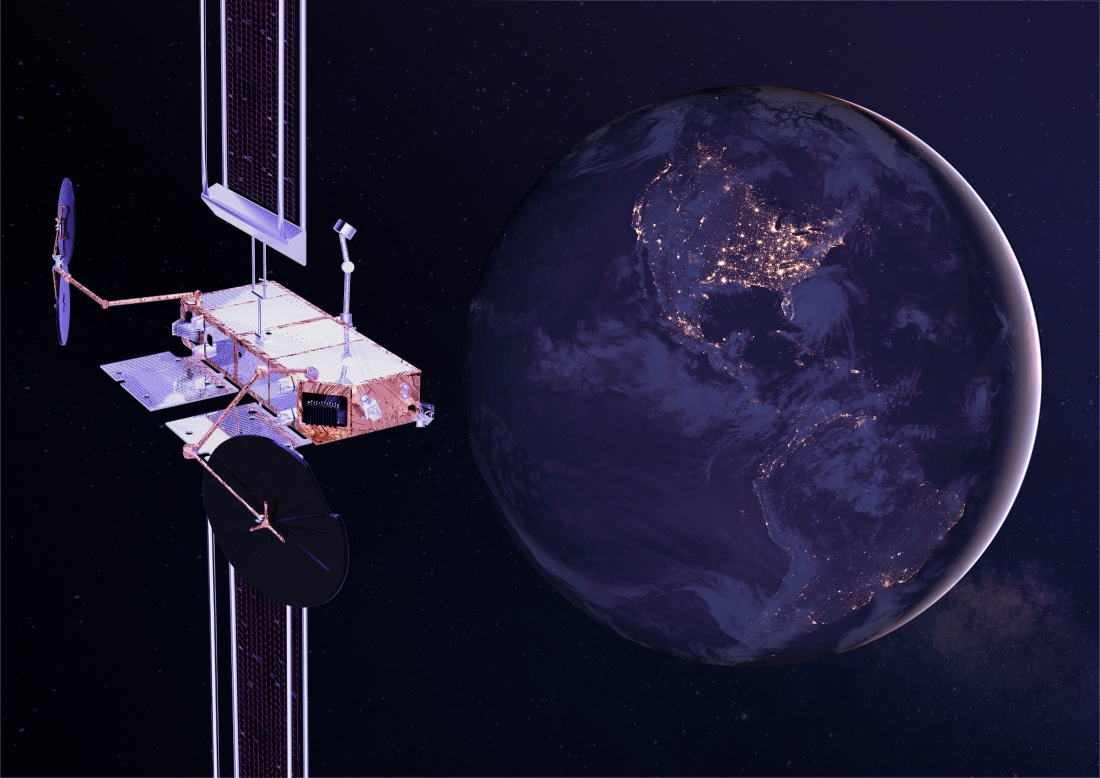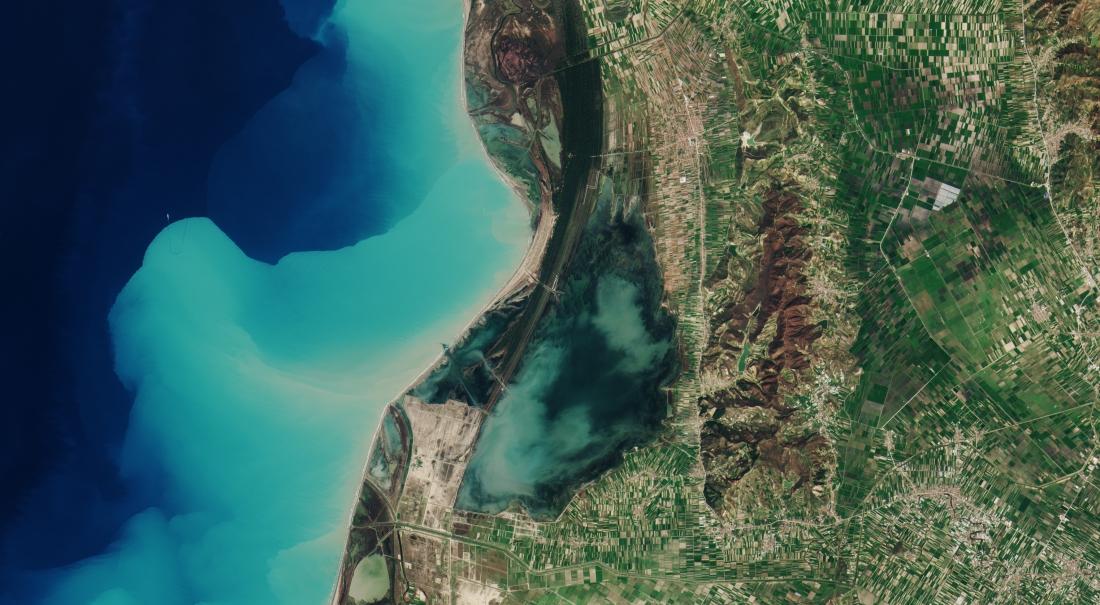Ground segments go digital
In the fiercely competitive satellite market, you now have to produce “more, faster and cheaper”. New technologies are a key to the quest to turn out more satellites in an industry undergoing major changes. The “Factory of the Future” concept is designed to introduce state-of-the-art and cost-competitive production technologies as an integral part of each company’s digital transformation. Additive manufacturing, robots, cobots, Factory 4.0, virtual and augmented reality, digital twins… All these concepts and more show how innovation in the true sense of the word has really come into its own at Thales Alenia Space.

While we often associate digital transformation with the incorporation of new technologies in the production process, we also tend to forget that this transition depends on the complete digitalization of ground and space segments alike. You’ve undoubtedly noticed that, since about 2010, telecom satellite payloads are becoming more and more digital. Our satellites based on all-electric Spacebus Neo platforms are increasingly fitted with digital and flexible payloads to deliver very high throughput satellite (VHTS) connectivity and meet users’ needs, while providing access to increasingly data-heavy content, or quite simply to bridge the digital divide around the world.That’s especially the case of the EUTELSAT KONNECT VHTS satellite, which will facilitate access to online content in isolated areas of France and throughout Europe.

We are also developing Space INSPIRE, a family of medium-size, agile and ultra-flexible communications satellites that can be fully reconfigured in orbit in less than 24 hours. Solutions such as these demand equally agile digital ground infrastructures, especially to securely manage the huge data streams, while also supporting our customers throughout the life of the satellite.
Digital transformation from A to Z

With the digitalization of satellite systems, we’re shifting the focus from hardware to software, or, in a word, software-defined. One good example is the Iridium NEXT constellation of very-high-throughput telecom satellites, combining Spacebus NEO platforms with VHTS payloads, or our new Space Inspire family. Current VHTS payloads feature a 5th generation digital transparent processor (DTP) – and Space Inspire will even offer a 6th generation model. With this unique technology, Thales Alenia Space took over leadership in the VHTS market at the end of 2019.
No satellite market segment has escaped this rampant digitalization, whether telecom, Earth Observation, or satellite navigation. The digital transformation of ground segments will inevitably follow.
About SpaceOps, the ground segment for telecom missions
For our upcoming VHTS communications systems, Thales Alenia Space is offering a mission ground segment based on our innovative SpaceOpsTM solution. This type of system monitors the digital payload and reconfigures it dynamically in line with users’ changing needs. Using information from the onboard processor, it actively manages bandwidth and power amplification levels to optimize traffic and meet each user’s specific needs. The agility of new-generation satellites, combined with our new-generation of mission ground segments, supports highly flexible reconfiguration in line with changing demand.
The importance of the imaging ground segment for Sentinel missions

You’ve undoubtedly heard of the Sentinel satellites developed for the European Space Agency (ESA) as part of the European Union’s vast Copernicus environmental monitoring program. These satellites are a key to environmental monitoring in Europe. Thales Alenia Space is prime contractor for the Sentinel-1 and -3 families (4 satellites each), it’s also in charge of the image ground segment for Sentinel-2, and it makes the imaging spectrometer for Sentinel-5P and the Poseidon-4 radar altimeter for the Jason-CS/Sentinel-6 mission. The company was recently selected by ESA, in agreement with the European Commission, on 5 out of 6 new Copernicus missions, including 3 as prime contractor: CHIME (Sentinel-10), CIMR (Sentinel-11) and ROSE-L (Sentinel-12). Thales Alenia Space will also be responsible for 2 payloads for CO2M (Sentinel-7) and CRISTAL (Sentinel-9).
Sentinel-2 image ground segment

In this article, we’re spotlighting the Sentinel-2 image ground segment. These satellites, built by Airbus Defence & Space as prime contractor, provide optical imaging to map the changing state of the Earth’s surface, identify pollution in lakes and coastal zones, help manage natural disasters and facilitate humanitarian rescue missions. To date, this family includes two identical satellites, Sentinel-2A and -2B. Operating in tandem, they give us a completely refreshed image of our planet’s land masses every five days.
Without the ground segment, the system would not generate any data! Every 100 minutes Sentinel-2A transfers its data to a data acquisition center. This data is then processed to produce images, which takes about an hour and a half. The image production process takes place in four steps: the satellite acquires raw data, which it transmits to a ground acquisition center. This data is then transferred to a processing center to generate the images, which are then distributed to other centers. Lastly, the data is stored in an archiving center, where it is accessible on user request.

Sentinel-2A alone completes a full cycle – total coverage of the Earth – in ten days, sending down 14 color “photos” per day, or one every 100 minutes. When combined with Sentinel-2B, the complete cycle takes only five days, based on one image every 50 minutes, or 28 per day.
The ground segment was designed to handle this data stream. Thales Alenia Space was chosen as image ground segment prime contractor in 2011 because of its proven expertise in this field, based on work for advanced Earth observation programs such as Envisat and MetOp.
Three keys to the digital transformation of ground segments

By digitalizing ground segments, we can automate algorithms to remotely reconfigure payloads – and this requires the use of artificial intelligence.
Secondly, to remotely manage this ever-increasing volume of data, we have to increase computing power. Our new solutions tend to be cloud-based, a method that provides a high degree of flexibility in ground segment operations. A cloud-based system directly speeds up time-to-market, since it allows us to offer our customers custom-tailored functions that change in line with demand. Furthermore, since we get immediate access to customer feedback, we can quickly carry out corrective measures in a virtually transparent manner – and that fosters a very close customer relationship. Last, but far from least, because of the sensitivity of the immense volume data involved, our ground segment integrates a native cybersecurity solution.

Artificial intelligence, cloud computing and cybersecurity are the three pillars of our digital ground segment solutions. And we’re working on adapting this winning trifecta to all space applications: communications, Earth observation and satellite navigation.
Stay tuned for more space chronicles addressing the digital transformation of Thales Alenia Space!
Copyrights: © Thales Alenia Space/Creative Spririt - © Thales Alenia Space/Master Image Programmes - © Thales Alenia Space/ © ESA/Copernicus - © ESA/ATG MediaLab - Images related to Sentinel-2B: contains modified Copernicus Sentinel data (2017), processed by ESA - Other images by © Pixabay